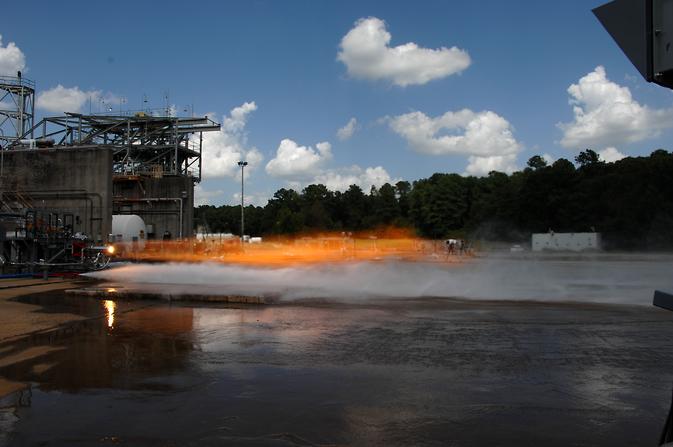 We have already seen several incredible applications of 3D printing and its connection to space travel. Both NASA, and Elon Musk’s SpaceX are pushing the boundaries of the technology in several directions, in the process taking advantage of the infinite complexity that additive manufacturing puts into the hand of designers and engineers. With 3D printing, almost anything seems to be possible.
We have already seen several incredible applications of 3D printing and its connection to space travel. Both NASA, and Elon Musk’s SpaceX are pushing the boundaries of the technology in several directions, in the process taking advantage of the infinite complexity that additive manufacturing puts into the hand of designers and engineers. With 3D printing, almost anything seems to be possible.
Back in May, SpaceX showed off their new SuperDraco Thrusters which will go on their Dragon Version 2 spacecraft. These thrusters featured engine chambers which were completely 3D printed. According to the company the thruster allowed them to conserve weight and save money, allowing them to create more complicated components using less individual parts.
It was just a matter of time until we would see similar approaches taken by NASA in their construction of rocket engines for their high powered spacecraft. Afterall they already are deeply involved in the additive manufacturing space, expected to take a 3D printer to the International Space Station later this year, and working to 3D print an entire space telescope. That time has seemingly come, as NASA has just unveiled a rocket engine injector, the first of its kind to ever be 3D printed. In fact, they had two such injectors produced by two different companies, Solid Concepts in Valencia, California, and Directed Manufacturing in Austin, Texas, each tested for 5 seconds at a time. Yesterday they released footage of one engine injector undergoing a hot-fire test at their Marshall Space Flight Center in Huntsville, Alabama.
The part, which is crucial to the engine’s performance, is responsible for sending propellant into the engine. It mixes hydrogen gas, and liquid oxygen together, which combusts at a quite balmy 6,000 degrees Fahrenheit, producing an incredible 20,000 pounds of thrust.
“We wanted to go a step beyond just testing an injector and demonstrate how 3-D printing could revolutionize rocket designs for increased system performance,” said Chris Singer, director of Marshall’s
Engineering Directorate. “The parts performed exceptionally well during the tests.”
The injector features 40 individual spray nozzles, 3D printed as a single piece. The entire injector is made up of just 2 parts, whereas, if this component was to be manufactured by traditional methods, there would be 163 different individual parts included. You can imagine why such new techniques are saving NASA, as well as other companies a tremendous amount of time and money, while allowing for complexity which would never have been imaginable without additive manufacturing.
“Having an in-house additive manufacturing capability allows us to look at test data, modify parts or the test stand based on the data, implement changes quickly and get back to testing,” said Nicholas Case, a propulsion engineer leading the testing. “This speeds up the whole design, development and testing process and allows us to try innovative designs with less risk and cost to projects.”
The tests were an overwhelming success, with the injectors performing to standards. Imagine the time the agency can save by simply being able to print new designs within hours, instead of having to wait weeks or even longer to have new parts created via injection molding for testing. The number of applications within engine manufacturing should continue to expand as NASA begins to understand the possibilities that this technology can bring to the table.
Let’s hear your thoughts on this recent accomplishment within the NASA 3D printing forum thread on 3DPB.com. Check out the video of the 5-second hot-fire testing of the engine injector below.
Subscribe to Our Email Newsletter
Stay up-to-date on all the latest news from the 3D printing industry and receive information and offers from third party vendors.
Print Services
Upload your 3D Models and get them printed quickly and efficiently.
You May Also Like
The Dental Additive Manufacturing Market Could Nearly Double by 2033, According to AM Research
According to an AM Research report from 2024, the medical device industry, specifically in dentistry, prosthetics, and audiology, is expected to see significant growth as these segments continue to benefit from...
Heating Up: 3D Systems’ Scott Green Discusses 3D Printing’s Potential in the Data Center Industry
The relentless rise of NVIDIA, the steadily increasing pledges of major private and public investments in national infrastructure projects around the world, and the general cultural obsession with AI have...
AM Research Webinar Explores Continuum’s Sustainable Metal Additive Manufacturing Powders
Metal additive manufacturing (AM) powder supplier Continuum Powders is working to develop solutions that empower industries to reduce waste and optimize their resources. An independent life cycle assessment (LCA) of...
3D Printed Footwear Startup Koobz Lands $7.2M in Seed Round
California-based Koobz is focused on reshoring the U.S. footwear supply chain with advanced manufacturing processes, including 3D printing. The startup just announced that it has added $6 million to its...

































